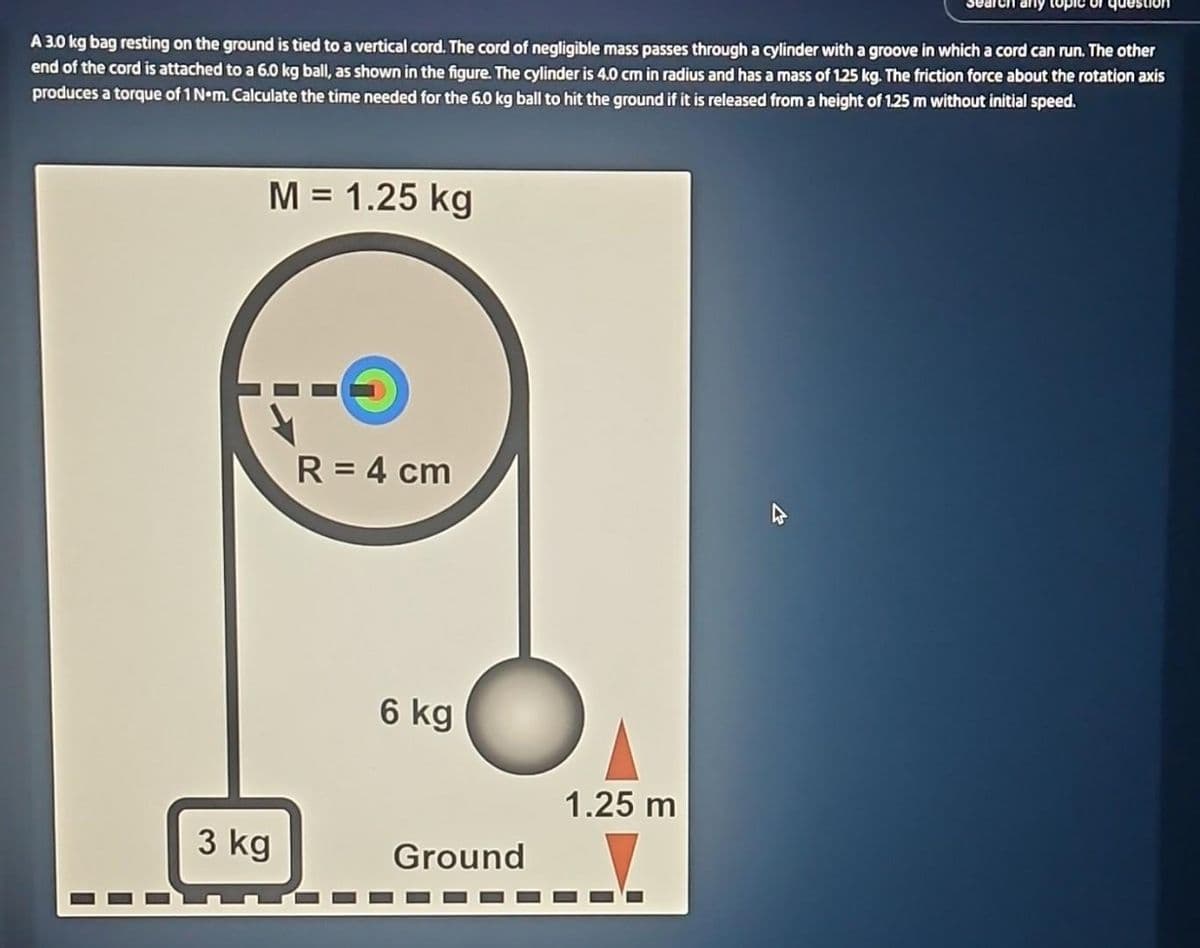A 3.0 kg bag resting on the ground is tied to a vertical cord. The cord of negligible mass passes through a cylinder with a groove in which a cord can run. The other end of the cord is attached to a 6.0 kg ball, as shown in the figure. The cylinder is 4.0 cm in radius and has a mass of 125 kg. The friction force about the rotation axis produces a torque of 1 Nem. Calculate the time needed for the 6.0 kg ball to hit the ground if it is released from a height of 1.25 m without initial speed. M = 1.25 kg 3 kg R = 4 cm 6 kg Ground 1.25 m
A 3.0 kg bag resting on the ground is tied to a vertical cord. The cord of negligible mass passes through a cylinder with a groove in which a cord can run. The other end of the cord is attached to a 6.0 kg ball, as shown in the figure. The cylinder is 4.0 cm in radius and has a mass of 125 kg. The friction force about the rotation axis produces a torque of 1 Nem. Calculate the time needed for the 6.0 kg ball to hit the ground if it is released from a height of 1.25 m without initial speed. M = 1.25 kg 3 kg R = 4 cm 6 kg Ground 1.25 m
Related questions
Question

Transcribed Image Text:A 3.0 kg bag resting on the ground is tied to a vertical cord. The cord of negligible mass passes through a cylinder with a groove in which a cord can run. The other
end of the cord is attached to a 6.0 kg ball, as shown in the figure. The cylinder is 4.0 cm in radius and has a mass of 125 kg. The friction force about the rotation axis
produces a torque of 1 Nom. Calculate the time needed for the 6.0 kg ball to hit the ground if it is released from a height of 1.25 m without initial speed.
3 kg
M = 1.25 kg
I
R = 4 cm
6 kg
Ground
1.25 m
Expert Solution
This question has been solved!
Explore an expertly crafted, step-by-step solution for a thorough understanding of key concepts.
This is a popular solution!
Trending now
This is a popular solution!
Step by step
Solved in 3 steps with 2 images
